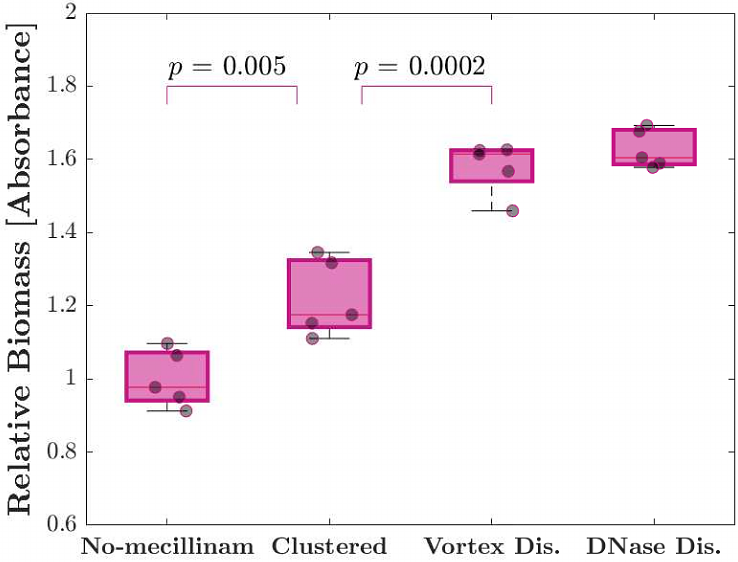Bacterial aggregation triggered by low-level antibiotic-mediated lysis

Bacterial aggregation triggered by low-level antibiotic-mediated lysis
Tavaddod, S.; Dawson, A.; Allen, R. J.
AbstractSuspended bacterial aggregates play a central role in ocean biogeochemistry, industrial processes and probably many clinical infections - yet the factors that trigger aggregation remain poorly understood, as does the relationship between suspended aggregates and surface-attached biofilms. Here we show that very low doses of cell-wall targeting antibiotic, far below the minimal inhibitory concentration, can trigger aggregation of Escherichia coli cells. This occurs when a few cells lyse, releasing extracellular DNA - thus, cell-to-cell variability in antibiotic response leads to population-level aggregation. Although lysis-triggered aggregation echoes known trigger mechanisms for surface-attached biofilms, these aggregates appear to be of a distinct type, since they do not show typical biofilm characteristics such as protection from antibiotics, or increased biofilm-forming potential. Our work contributes to understanding the nature of bacterial aggregates and the factors that trigger their formation, and the consequences of widespread low-dose antibiotic exposure in the environment and in the body.